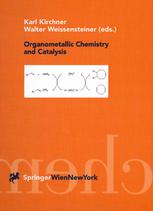

Most ebook files are in PDF format, so you can easily read them using various software such as Foxit Reader or directly on the Google Chrome browser.
Some ebook files are released by publishers in other formats such as .awz, .mobi, .epub, .fb2, etc. You may need to install specific software to read these formats on mobile/PC, such as Calibre.
Please read the tutorial at this link: https://ebookbell.com/faq
We offer FREE conversion to the popular formats you request; however, this may take some time. Therefore, right after payment, please email us, and we will try to provide the service as quickly as possible.
For some exceptional file formats or broken links (if any), please refrain from opening any disputes. Instead, email us first, and we will try to assist within a maximum of 6 hours.
EbookBell Team

4.8
34 reviewsFrom the beginning of chemistry as an exact (natural) science - almost 200 years ago - there was a more or less distinct differentiation between its various branches such as organic, inorganic, physical, analytical, or biochemistry. With the increasing insight into the connections and governing laws it soon became obvious, however, that such a clear separation could be regarded as more or less obsolete; within almost any field of chemical research one has to deal with most of the branches mentioned. Especially organic and inorganic chemistry are significant examples for this statement, overlapping considerably within the important field of organome tallic chemistry. This regime of chemistry started its advance with the discovery of dimethylzinc 150 years ago, had a highlight with the introduction of Grignard reagents around 1900, developed further with the start of lithium organyls in 1925 and literally exploded after the discovery of the first transition metal cyclopenta dienyl complex ferrocene half a century ago. The chronological sequence of the important steps, i. e. 1850 (Zn) - 1900 (Mg) - 1925 (Li) - 1950 (Fe), seems rather remarkable. The increasing group of metallocenes is not only of high theoretical and, due to the potential chirality of its members, stereochemical interest, but offers also a wide variety of extremely useful catalysts, especially for stereoselective reactions. The Austrian Chemical Society took this development into account by organizing the Twelfth International Conference on Organometallic Chemistry held in Vienna in 1985.